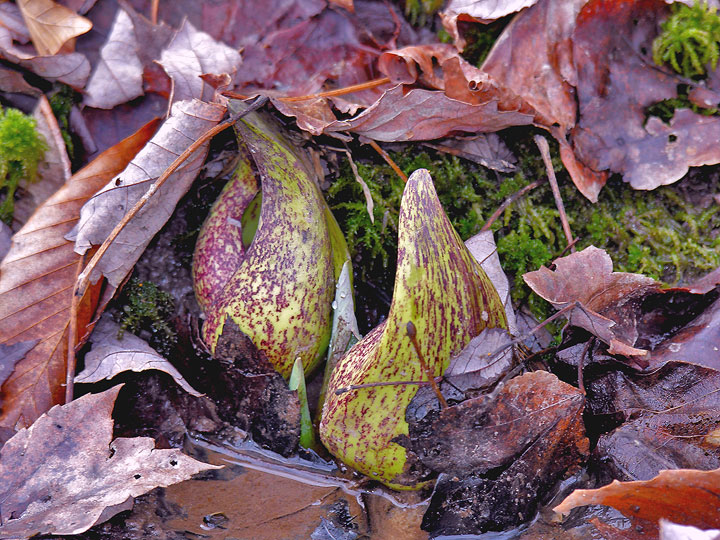
| Photos © Kim Hosen, Headwaters of Powell's Creek, January 2005 |
Skunk Cabbage The skunk cabbage looks like it came from a science fiction movie, but it can be found in wet areas, especially streams, ponds, marshes, and wet woods. Skunk cabbage is one of the first plants to bloom in the spring. The first part of the plant to emerge is called the spathe, which is the brownish-purple pod-like structure with green splotches shown in the picture on the left. As the spathe grows, it reveals the spadix, a small knob covered with tiny yellow flowers. You may be asking, "But why is it named the skunk cabbage?" By late spring, a tightly rolled leaf spurts from the ground that eventually matures into a form more recognizable as a cabbage. When the leaf unfurls, it may be one to two feet long and a foot wide. If the leaves are crushed, the plant produces a strong odor reminiscent of rotten meat. Whereas the smell would send us running away, the smell attracts insects, which pollinate the plant. The most notable pollinators are flies, but butterflies, bees, and beetles also pollinate the skunk cabbage. As autumn arrives, the leaves fall and rot. Slugs, millipedes, isopods, and other animals eat the leaves, but the leaves are poisonous to mammals, including humans. The large fallen leaves also provide shelter for small animals. In late winter and early spring, new flowers release heat, which can melt snow surrounding the flower. The heat draws flies and other insects to the plant. |






